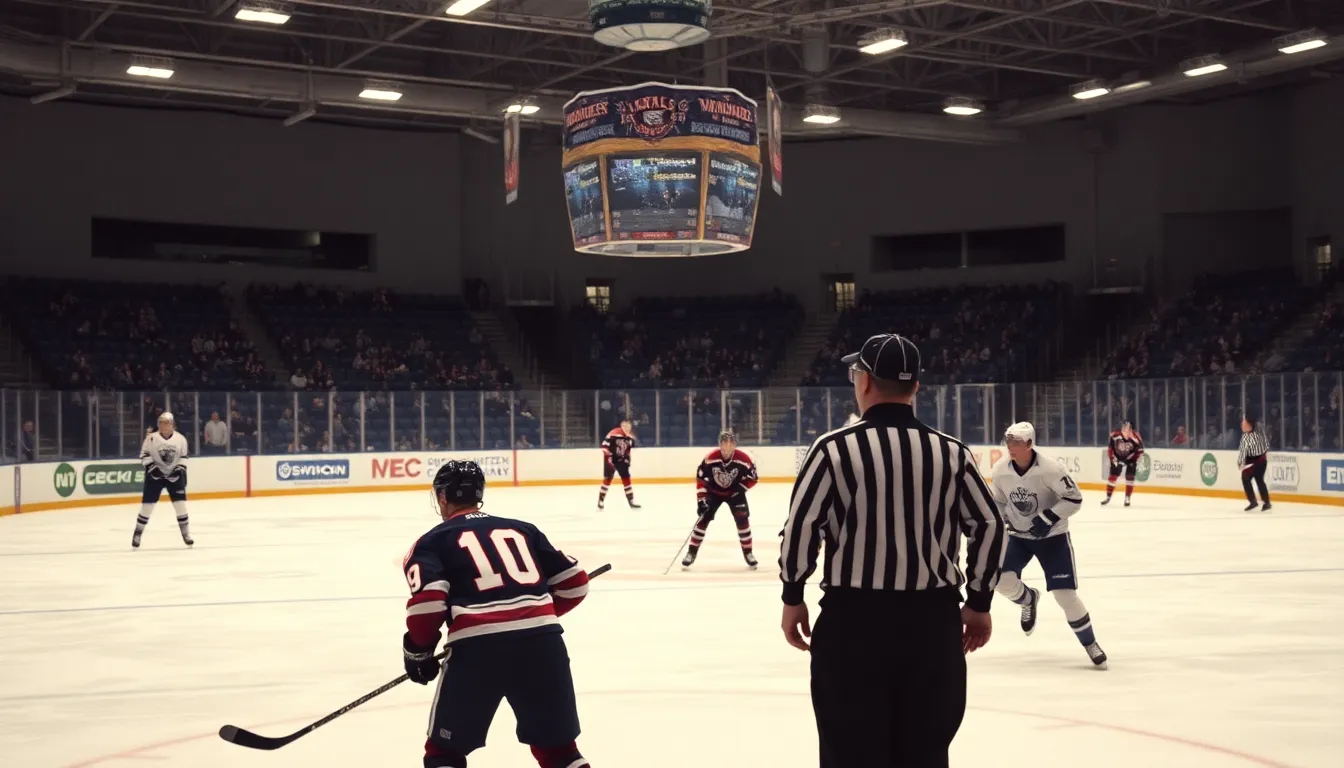Ever found yourself glued to the TV during a nail-biting hockey game, wondering how long it’ll last? You’re not alone! Hockey is a thrilling sport, but its duration can be as slippery as a puck on ice. Whether you’re a die-hard fan or just tuning in for the snacks, knowing how long a hockey game lasts can save you from the dreaded “oops, I missed the best part” moment.
Typically, a professional hockey game lasts about two and a half hours, but don’t let that fool you. Between the heart-stopping goals, intense penalties, and the occasional fight, it feels like a rollercoaster ride on ice! So grab your favorite snack and settle in, because once the puck drops, you won’t want to miss a second of the action.
Table of Contents
ToggleOverview Of A Hockey Game
Professional hockey games typically last about two and a half hours. This includes active gameplay, breaks, and intermissions, all of which contribute to the overall experience.
Game Duration Structure
Each hockey game consists of three periods. Periods last 20 minutes, with stoppages in play adding time to the overall game duration. In cases where the score is tied, overtime periods may follow. Overtime consists of a sudden-death format, where the first team to score wins the game. Additionally, shootouts may occur, further extending the duration if necessary.
Breaks And Intermissions
Two intermissions occur during a hockey game. Each intermission lasts around 15 to 18 minutes, providing players time to rest and strategize. Breaks also allow fans to refresh, enjoy concessions, and discuss gameplay. Media coverage highlights significant moments during these breaks, maintaining fan engagement. Overall, intermissions enhance the viewing experience while allowing teams to regroup.
Factors Influencing Game Length

Several elements impact the overall length of a hockey game. Understanding these factors clarifies the unpredictability of game durations, beyond the standard 60 minutes of play.
Overtime Rules
Overtime rules play a crucial role in game length when teams tie at the end of regulation. In the NHL, a five-minute sudden-death overtime period typically follows, where the first team to score wins. If no team scores during overtime, a shootout occurs, further extending the game’s duration. Each team takes a series of penalty shots, contributing to additional time on the clock. This format ensures thrilling finishes and can significantly lengthen the game, making tie-breaks essential in determining a victor.
Timeouts And Delays
Timeouts and delays can prolong a hockey game as well. Each team is allowed one 30-second timeout per game, providing coaches with opportunities to regroup and strategize. Injuries may also halt play, requiring medical attention or player substitution. Additionally, video reviews for goals or penalties can extend interruptions, adding crucial seconds or minutes to the overall game time. These factors showcase how elements beyond the standard play impact the experience for fans and players alike.
Comparisons With Other Sports
Hockey’s game length differs from that of several popular sports. Understanding these differences can enhance the viewing experience.
Hockey vs. Basketball
A professional basketball game lasts approximately two hours, featuring four quarters at 12 minutes each. Unlike hockey, basketball has fewer stoppages in play, resulting in shorter overall durations. Although halftime spans around 15 minutes, timeouts and fouls can still extend the game. Fans often experience a continuous flow of action in basketball, contrasting with hockey’s structured periods and intermissions. Both sports can experience thrilling overtime, but basketball follows a different format, adding five minutes to the clock for each extra period.
Hockey vs. Football
Football games typically extend over three hours, consisting of four quarters each lasting 15 minutes. Hockey’s duration appears relatively concise at two and a half hours, primarily due to the action-packed nature of the game. The intermissions in hockey allow for player strategy adjustment, while football features halftime lasting about 12 minutes. Stoppages in football, such as commercial breaks and injury timeouts, contribute significantly to the overall game’s length. Overtime rules differ as well, as football can extend games with sudden-death formats or full additional periods.
Understanding the duration of a hockey game enhances the overall viewing experience. With its thrilling pace and strategic breaks players and fans alike can fully immerse themselves in the action. The unique structure of three periods interspersed with intermissions creates a rhythm that sets hockey apart from other sports.
Whether it’s the excitement of a last-minute goal or the tension of a shootout fans appreciate every moment. As they settle in for a game they can expect an experience that combines skill intensity and unpredictability. Embracing the full duration of a hockey game makes for a more rewarding experience in this fast-paced sport.





